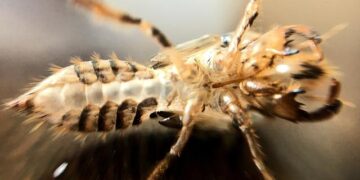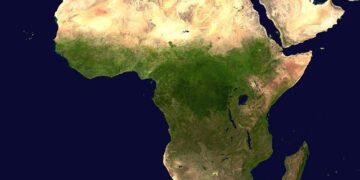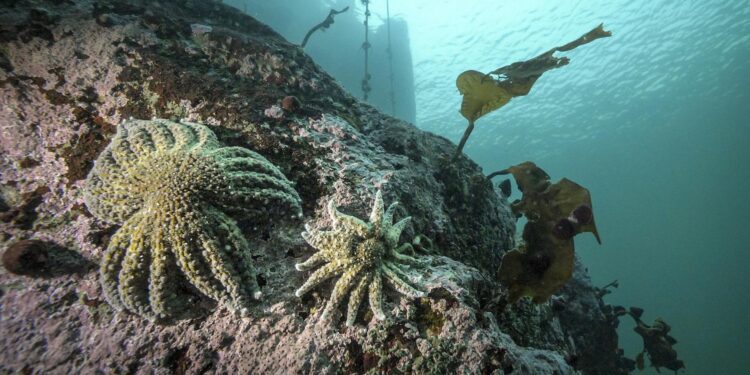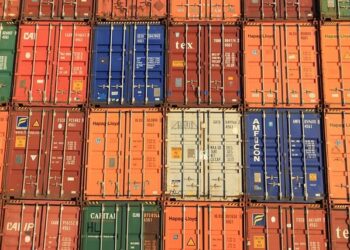A recent breakthrough in marine biology has identified Vibrio pectenicida strain FHCF-3 as a key culprit behind the devastating sea star wasting disease. This discovery, detailed in a new study published in Nature, sheds light on the mysterious pathogen responsible for mass sea star die-offs along coastlines worldwide. Scientists believe understanding this bacterial strain’s role could be crucial in managing and mitigating the ongoing ecological crisis threatening these vital marine predators.
Vibrio Pectenicida Strain FHCF3 Identified as Key Driver Behind Sea Star Wasting Disease
Recent investigations have pinpointed Vibrio pectenicida strain FHCF-3 as a primary culprit behind the alarming outbreaks of sea star wasting disease (SSWD) that have decimated populations along multiple coastlines. Researchers utilized advanced genomic sequencing alongside controlled infection experiments to confirm the bacterium’s pathogenic role. This discovery not only sheds light on the microbial dynamics impacting marine ecosystems but also marks a significant step toward developing effective mitigation strategies against the rapid decline of these keystone species.
Key findings reveal that this particular strain exhibits unique virulence factors, enabling it to aggressively invade and disrupt the sea star’s tissues. The study highlights:
- Rapid propagation: FHCF-3 spreads swiftly, accelerating disease progression within affected populations.
- Environmental resilience: The bacterium thrives under varying temperature and salinity conditions, complicating control efforts.
- Host specificity: Primarily targets multiple sea star species, contributing to broad ecological impacts.
| Characteristic | Details |
|---|---|
| Optimal Growth Temperature | 18-24 °C |
| Primary Hosts | Pisaster ochraceus, Asterias forbesi |
| Mode of Transmission | Waterborne, direct contact |
| Virulence Factors | Extracellular enzymes, hemolysins |
Study Reveals Mechanisms of Infection and Impact on Marine Ecosystems
Vibrio pectenicida strain FHCF-3 has been identified as a primary culprit behind the devastating sea star wasting disease, a phenomenon that has caused widespread mortality among sea star populations along various coastlines. Researchers uncovered that this bacterial strain employs a multifaceted infection strategy, including the secretion of toxic enzymes that break down sea star tissue, impairing their ability to regenerate and heal. This aggressive bacterial attack disrupts the delicate balance of marine ecosystems, as sea stars play a crucial role in controlling the population of mussels and other invertebrates. The study highlights how environmental stressors, like rising ocean temperatures and pollution, exacerbate the severity and spread of infection.
The impact on marine ecosystems extends beyond the immediate loss of sea stars, triggering a chain reaction that affects biodiversity and coastal habitats. Key findings emphasize:
- Rapid Disease Transmission: FHCF-3 spreads quickly through waterborne contact, accelerating local outbreaks.
- Ecosystem Imbalance: Reduced predation pressure allows prey species to dominate, threatening coral reefs and kelp forests.
- Potential for Secondary Infections: Compromised sea stars are vulnerable to other pathogens, leading to complex disease dynamics.
| Characteristic | Effect on Sea Stars | Ecological Consequence |
|---|---|---|
| Tissue Necrosis | Rapid limb degradation | Loss of mobility and feeding |
| Immune Suppression | Increased vulnerability to pathogens | Higher mortality rates |
| Enzymatic Degradation | Breakdown of dermal layers | Disruption of marine predator-prey balance |
Experts Urge Enhanced Monitoring and Targeted Measures to Protect Sea Star Populations
Marine biologists and environmental experts emphasize the urgent need to bolster surveillance efforts along vulnerable coastlines where sea star populations are at risk. Continuous monitoring of Vibrio pectenicida strain FHCF-3 prevalence, coupled with environmental data collection, is critical to understanding the pathogen’s spread dynamics. Such initiatives would enable early detection and rapid response, potentially preventing devastating outbreaks that lead to drastic declines in sea star numbers.
To combat this growing threat, experts advocate for targeted intervention strategies focused on high-risk zones. Recommended measures include:
- Restricting human activity in infected areas to minimize pathogen transmission
- Implementing controlled quarantines for infected sea star groups
- Enhancing water quality management to reduce bacterial proliferation
- Launching public awareness campaigns on disease impacts and mitigation efforts
| Measure | Expected Impact | Priority Level |
|---|---|---|
| Enhanced Coastal Monitoring | Early outbreak detection | High |
| Quarantine Protocols | Reduce disease spread | Medium |
| Water Quality Control | Limit bacterial growth | High |
| Public Engagement | Increase community cooperation | Medium |
Key Takeaways
As researchers continue to unravel the complexities behind sea star wasting disease, the identification of Vibrio pectenicida strain FHCF-3 as a key causative agent marks a significant milestone. This discovery not only advances our understanding of the disease’s origins but also opens new avenues for monitoring and managing the health of vulnerable marine ecosystems. With sea stars playing a crucial role in ocean biodiversity, ongoing surveillance and further research will be essential to mitigate the impact of this devastating pathogen and protect marine life for future generations.































